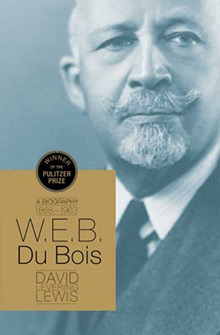
The study is considered one of the earliest examples of statistical work being used for sociological purposes, with extensive fieldwork resulting in hundreds of interviews conducted door-to-door by Du Bois. The work took up so much of his time that he missed the birth of his first son in Great Barrington. The Philadelphia Negroĭu Bois took a position at the University of Pennsylvania in 1896 conducting a study of the city’s Seventh Ward, published in 1899 as The Philadelphia Negro. His doctoral thesis, “The Suppression of the African Slave Trade to the United States of America, 1638–1870,” became his first book and a standard in American education covering slavery. There, he married Nina Gomer, one of his students, in 1896. He returned to the United States without his doctorate but later received one from Harvard while teaching classics at Wilberforce University in Ohio. at the University of Berlin until his funding ran out. Du Bois became an editor for the Herald, the student magazine.Īfter graduation, Du Bois attended Harvard University, starting in 1888 and eventually receiving advanced degrees in history. His tuition was paid by several churches in Great Barrington. Duboisĭu Bois initially attended Fisk University in Nashville, Tennessee, a school for Black students. In 1883, Du Bois began to write articles for papers like the New York Globe and the Freeman.

Duboise.” Two years after his birth his father, Alfred Du Bois, left his mother, Mary Silvina Burghardt.ĭu Bois became the first person in his extended family to attend high school, and did so at his mother’s insistence. Du Bois argued in favor of acts of self-defense and armed resistance, despite the editorial’s conciliatory title, "Let Us Reason Together.Born in Great Barrington, Massachusetts, on February 23, 1868, Du Bois’ birth certificate has his name as “William E. In urban African-American enclaves, the 1920s were marked by a flowering of cultural expressions and a proliferation of black self-help organizations that accompanied the era of the “New Negro.” Debates raged over the best political and organizational path for black Americans, and the Crisis, the national magazine of the National Association for the Advancement of Colored People (NAACP), offered one of the earliest and most powerful endorsements of the “New Negro.” In an editorial immediately following the Chicago race riot of 1919, Crisis editor W.

Many white Americans, fearful of competition for scarce jobs and housing, responded by attacking black citizens in a spate of urban race riots.

"n the years immediately following World War I, tens of thousands of southern blacks and returning black soldiers flocked to the nation’s Northern cities looking for good jobs and a measure of respect and security.


 0 kommentar(er)
0 kommentar(er)
